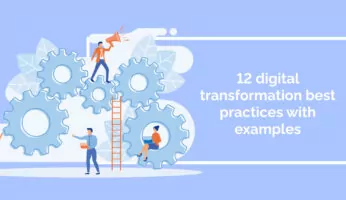
Data has become more than mere numbers on a page. In this age of digital transformation – particularly artificial intelligence (AI) and machine learning – data has become a valuable commodity across every industry and every organizational function, including HR.
HR analytics can be used to take the gathering of employee, workforce and industry data to the next level, but to achieve this, knowledge and investment in technology are essential.
Descriptive, predictive and prescriptive analysis and data all play important roles in an effective HR analytics system. Descriptive data is the basic information, such as staff numbers and annual leave records, which is a good starting point for an HR analytics plan, but it is best combined with predictive and prescriptive analytics.
Predictive analytics is derived from information that organizations can use to forecast and make strategic plans, especially in the long term. Examples of this include labor market data that might indicate future staff shortages or economic projects that might affect revenue. Prescriptive analytics, meanwhile, is the process whereby descriptive and predictive data is analyzed and suggestions for improvement are made. This step is more effective when combined with leading-edge technology.
When HR analytics are leveraged to their maximum potential, the power of this data is unlimited. At its best, using data combined with leading edge technology means HR analytics become more than a mere number-crunching process – it becomes an integral part of strategic workforce planning and process efficiency for the entire organization with real financial benefits.
Understanding HR analytics data needs
A vital first step when leveraging data for effective workforce planning and optimization is to understand quite simply what information your organization needs to kickstart this process. What sort of information will help senior managers make better decisions about the workforce?
Internal and external data will need to be gathered, aggregated and analyzed, which can seem like an overwhelming and onerous task at first. But starting with the basic descriptive data – the easily accessible internal information – before moving on to the more detailed data is a good way to start embracing a comprehensive HR analytics programme.
Descriptive data will give organizations early insights into their workforces that can then be bolstered by the addition of predictive and prescriptive analytics based on more detailed, far-reaching data.
For example, gathering data about employee ages will determine the average age of people in an organization. This is useful information because organizations can better cater to the training and development needs of existing employees and make smart future hiring decisions. If the average age is revealed to be under 30, this data can be used to find ways to improve staff retention as younger employees tend to stay in jobs for shorter periods of time. On the other hand, if the average age is much older, this could mean your organization could be facing recruitment issues created by large numbers of employees reaching retirement age, as well as losing years of valuable experience and organizational knowledge.
If even the simplest and most easily accessible internal data can help with detailed insights for recruitment, training and staff retention decisions, the possibilities for properly leveraging the more detailed predictive and prescriptive analytics are immense.
By gathering external data about immigration patterns and changes in demographics in your local area, for example, it is possible to gain insights into potential labor shortages before they happen, as well as ways to effectively recruit locally, regionally, nationally and internationally. This means businesses can not only avoid labor shortages, but ensure that the best people from the most diverse talent pool can be hired. Being able to make good decisions about staffing based on detailed data can give your company the edge over competitors and save money in the short and long term.
At its best, gathering the right data becomes a vital part of the strategic planning process, improving every part of the organization – and to achieve this, it is important to invest in the right technology.
Understanding technology needs
As well as determining exactly which metrics your organization needs to make good decisions, optimize the workforce and undertake strategic planning, it is important to determine what HR analytics technologies will best serve your needs as you become a data-driven organization.
There are multiple factors to consider when taking the first steps toward investing in the right HR analytics technologies. These include:
- Size of workforce: A small company will have different data needs to a large, complex organization. Smaller companies might not need as many moving parts to their HR analytics systems compared to a large organization with big teams and multiple departments where internal communication and data-gathering can be an unwieldy task.
- Geography of workforce: Just as smaller organizations might not need to overcapitalize with an expensive HR analytics solution, organizations with a more geographically concentrated workforce might find simpler solutions to be effective. In contrast, organizations with multiple premises, either within a region or country – or on a global scale – could benefit from a more complex solution to overcome the tyranny of distance when gathering data.
- Existing technology: If an organization has already made some investment in HR analytics solutions, it could be that some upgrades to legacy systems will achieve good results, instead of reinventing the wheel, scrapping existing technologies, and starting the whole investment process from scratch. This is when it can be useful to receive independent advice on the best HR analytics solutions for your needs.
- Technology skills in the organization: The level of technological skill can vary enormously between organizations and even within organizations. It is important to ensure that whatever technology you opt for, it is user-friendly for all employees and to be aware that additional training may be required. For example, self-service functionality allows employees across the organization to be involved in HR analytics in a way that is engaging and empowering.
- Budget: Even the most profitable companies have budgets to observe. After all, they didn’t become profitable by spending recklessly. It is important to be realistic if budget constraints have been placed on HR leaders looking to invest in HR analytics technology. However, making a solid business case for investing in the best technology to manage HR data can help boost the budget.
- Time constraints: Ideally, introducing systems for HR analytics should not be rushed and HR professionals should have ample time to devise a plan, determine what data is important, and select the best technology. If, however, it is deemed that data needs are critical, a simple solution might be a good place to start, before making bigger investments. In the long-term, it is important to select technologies that save time rather than add onerous data-gathering and analysis processes to the workloads of busy people.
Keeping data up to date is imperative to the success of an HR analytics system. The technology should enable easy data entry when this is required, as well as smart functions to automatically gather data, aggregate it, analyze it – and take it to the ultimate level with prescriptive analytics so that recommendations can be made automatically and as new information comes in. This is where the power of AI, NLP, and machine learning truly comes into its own – and this is why it is important to be able to make an articulate and compelling business case for investing in these solutions.
Getting senior management buy-in for technology investment
Demonstrating a return on investment is essential when making the business case for investing in HR analytics technology. It may be easy to convince senior management of the need to gather extensive data, but convincing those who control the budgets of the need to spend money on technology to streamline data gathering and analysis processes can be an additional challenge for HR leaders.
Eight great bottom line benefits of establishing a best practice HR analytics system with state-of-the-art technology include:
- Better talent acquisition: When organizations have the right data about demographics, where to find the best people to fill positions, and systems in place to gather, analyze, and filter job application data, the chances of hiring the right people for the right jobs improves enormously.
- Improved staff retention: Better talent acquisition in turn leads to improved staff retention, but this is not the only way investing in a strong HR analytics system helps with staff retention and prevents costly staff turnover. When employee data, such as feedback on job satisfaction and information on training needs, is gathered efficiently, analyzed and action taken, the staff retention improvement can make a real difference to the bottom line.
- Spotting skills gaps: Gathering data on employees’ prior experience and qualifications – as well as areas where they might be struggling – is important for workforce optimization. This sort of data might seem quite basic, but when properly analyzed, it provides deeper insights into the skills of your workforce. Skills and qualifications that might have been previously overlooked can be flagged up to redeploy people into roles better suited to their abilities, and if there are areas for improvement, training needs are more easily identified. While training is an added cost for businesses, training people in the right areas is a worthwhile investment that will reap returns.
- Improved productivity: There is a direct correlation between employee productivity and company profitability, so a well-designed HR analytics system should play a vital role here. As well as improving productivity through spotting skills gaps, HR analytics data can be utilized to monitor how employees are using their time and determine if any processes can become more efficient and if there are better ways for employees to spend their time at work.
- Improved process efficiency: Improving process efficiency goes beyond boosting productivity. Process efficiency is about examining the resources and procedures that used to get work done. HR analytics helps organizations optimize internal processes and find ways to streamline workflows, particularly when prescriptive analytics technology is used. Solutions that provide data on how people interact with different systems can be invaluable in finding ways to improve process efficiency.
- Tracking HR costs: It might seem obvious, but one of the most basic functions of HR analytics is to gather the data that helps organizations keep track of personnel management-related costs, such as recruitment and training. If this data is easily collated, accessed and analyzed, it makes it much easier to pinpoint areas where savings can be made.
- Better financial insights: An optimal HR analytics system goes well beyond merely providing data on personnel that is not used outside the HR office. As well as keeping HR costs under control, a good HR analytics system becomes integral to an organization’s strategic planning processes. Predictive analytics have the power to bring finance and HR departments together. When data from both departments is brought together, aggregated, and analyzed, deeper insights can be found to inform business decisions.
- More engaged employees: Involving employees across entire organizations in the digital transformation of HR functions is a great way to improve engagement. It is a democratization of the data-gathering process via the democratization of AI. When user-friendly self-service functions are in place and employees are able to provide their feedback – and see the improvements that come from their input – the benefits in terms of productivity, job satisfaction, career development, and retention will be immense.
A fast track to digital transformation
In conclusion, embracing the latest HR analytics technology to unleash the potential of data should be an essential part of any organization’s digital transformation journey. AI and machine learning in particular are making multiple processes across organizations more efficient, safer and more effective in meeting business needs.
For example, in oil and gas operations, AI-based monitoring can alert the team to potential hazards, such as gas leaks, so they can be dealt with before they become a serious danger. But there is no reason why those same oil and gas companies cannot apply the same technologies to their HR departments to make enormous business-wide improvements.
Forward-looking companies cannot neglect HR departments when they underdog digital transformation – and using the best HR analytics solutions to get the most out of internal and external data will optimize workforces and benefit entire organizations.
WalkMe Team
WalkMe spearheaded the Digital Adoption Platform (DAP) for associations to use the maximum capacity of their advanced resources. Utilizing man-made consciousness, AI, and context-oriented direction, WalkMe adds a powerful UI layer to raise the computerized proficiency, everything being equal.



